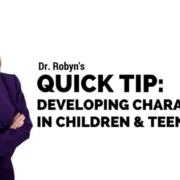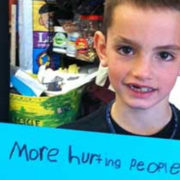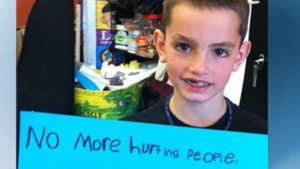In honor of our daughter’s 4th birthday, I am republishing some of my adoption articles. This is the third article in the series. Happy Birthday to our sweet baby girl.
 Believe me. This was not what I had envisioned when I thought about pregnancy for myself. I was more of a traditional gal—thinking that the whole baby- boarding process would actually be taking place in my own body. You know—baby bump, bloated feet, morning sickness–the whole enchilada. I certainly hadn’t considered the possibility of pregnancy being an out-of-body experience.
Believe me. This was not what I had envisioned when I thought about pregnancy for myself. I was more of a traditional gal—thinking that the whole baby- boarding process would actually be taking place in my own body. You know—baby bump, bloated feet, morning sickness–the whole enchilada. I certainly hadn’t considered the possibility of pregnancy being an out-of-body experience.
But when we decided on adoption, and ultimately, open adoption, that’s what it became. I can say now that I couldn’t be more grateful. It was one of the most beautiful experiences of my life. But at the start, I thought I might just throw up my lunch.
Look; the 1st trimester is never a sure thing. It’s unpredictable, tenuous, and scary. I should know; I had lost 4 pregnancies during those 1st 12 weeks. And yet, here I was willingly and excitedly matched with a birth mother whose baby—no, fetus—was only the size of a pin head and looked more like a baby seahorse than anything human.
What was I doing to myself? How would I survive the next 35 weeks just watching and hearing updates from the sidelines? The last time I checked, pregnancy was notsupposed to be a spectator sport. I often wondered how I would get through it all considering I was no longer in charge.
I tried to remain “stress-free.” I did yoga. Took hot showers. Went to bed early. But my mind stayed up like a hyped-up teenager on a case of RedBull. Is she eating right? Drinking? Smoking? Resting? I hope nobody is stressing her out at work. I’ll kill ‘em.
OK. So maybe “stress-free” wasn’t going to happen. I’d settle for not going nuts.
The one saving grace was that our birth parents, C and M (not providing full names because I want to be sensitive to their privacy), were totally relaxed and completely willing to share the process with us. In fact, C would give me the play by play. And what could have been unpleasant and anxiety-provoking, became, well, fun!
“You’re baby has elbows!” she wrote to me in an email. I loved that she said “your baby” – It reassured me that this was actually happening. This baby would become my child.
And I loved that she kept track of what was happening inside her body. I savored every nugget of information—no matter how small—because it somehow connected me to this life that was soon to intertwine with mine. C even sent me a phone video showing a remote control dancing along her belly just so I could experience what it was like to see my baby kick. She didn’t have to do it. But she did.
C invited me to become her partner in this process. We came to care about each other. We checked in with one another. How was she feeling? How was I? What were our thoughts, concerns, hopes and dreams for this child? What questions did we have for the doctor? Amazingly, and with great sensitivity, she allowed the pregnancy to become “ours” rather than just “hers.”
Of course that meant that we got all the stressful news as well. Yippee. There was the bleeding episode in the 10th week when we all put our feet up in sympathy and prayed for a summertime miracle. And then there was “the flu that stole Christmas” when M called us from the hospital to tell us that C had thrown up 17 times and she was now on an IV drip. Happy Holidays.
But the good always outweighed the scary. And while my body wasn’t growing and changing, C allowed us to experience the pregnancy through her. She invited us into her private world.
So we were there—flanked at C’s head and feet— when Tallie made her first on-screen 3D cameo. It was week 18 and the four of us found out that we were having a little girl. I couldn’t help it. I kissed C right on the head. And when we couldn’t be there, since we were in Massachusetts and they were in Oklahoma, C played a CD of our voices to her belly every night and morning. “She loves when you sing to her,” she would write. “You’re going to be the best Mom.” My heart was full. She had no idea how much that meant to me.
She even let me feed her. Does that sound strange? I don’t mean that I carted C around on a satin chaise and fed her grapes. No. She allowed me to send her big vats of food. Being raised by a Jewish woman, I guess you can say I am programmed to make feasts. It’s in our blood. So C indulged me when I sent containers of turkey chili, roast turkey dinners and of course, chicken soup, to her home.
Being a girl who didn’t cook and who lost her mother at the tender age of 13, C didn’t know much about home-cooked meals. So she gobbled up what I sent her, replete with yummy noises to boot, and thanked me profusely. She told me how grateful she was. But she was the true hero. By allowing me to nourish her she was also allowing me to nourish my future child as well. Not everyone would get that. But she did.
And when it came time to discuss the birth plan, it was decided unanimously that we would all be in the room. She insisted on it. And Jason was to cut the cord. “He’s the Daddy, after all,” she said. “Besides, M would faint like a little girl if he had to do it.”
So on the day of our daughter’s birth, we all stood united in the delivery room. And at 10:19am, we all cheered and teared up when Tallie took her first breath.
I was the first to hold this beautiful baby girl—a momentous occasion indeed. But perhaps one of the most memorable moments came after all the doctors were gone. It was the moment that we got to introduce our baby girl to her birth mother—the one who had cared for her over the past 9 months—the one who had loved her enough to place her in our arms—and the one who made this out-of-body pregnancy one of the most precious experiences of our lives. One might think this moment would be scary. It wasn’t. It was…beautiful. It was the moment that we became a family. All 5 of us.
Dr. Robyn Silverman is a Child & Teen Development Specialist, Professional Speaker and parenting expert often seen in national press such as on The Today Show, Good Morning America & Anderson Live. Her adoption series won a silver award from Parenting Publications of America. She is so grateful to have been able to build her family through the amazing process of open adoption.





 I hope you are thinking about the highlights of your weekend– the sweet moments and the times that gave you peace or smiles, however far between. I know that life can get hard sometimes. Not all of it- but some of it. The kids don’t always behave. Those great events you planned for? Often they don’t go exactly as you thought they would.
I hope you are thinking about the highlights of your weekend– the sweet moments and the times that gave you peace or smiles, however far between. I know that life can get hard sometimes. Not all of it- but some of it. The kids don’t always behave. Those great events you planned for? Often they don’t go exactly as you thought they would.

 Women (and many men too) are notorious for aiming for perfect. Whether it’s in parenthood, the workplace, our looks or the overall appearance that we have it all together, imperfections are painted over with a broad brush.
Women (and many men too) are notorious for aiming for perfect. Whether it’s in parenthood, the workplace, our looks or the overall appearance that we have it all together, imperfections are painted over with a broad brush.



 Dr. Robyn Silverman answers one parent’s question about how to instill manners in her children– especially when they haven’t been overtly enforced in the past.
Dr. Robyn Silverman answers one parent’s question about how to instill manners in her children– especially when they haven’t been overtly enforced in the past.
 As we now all know, yesterday’s tragic bombing at the Boston Marathon resulted in at least 176 people injured.
As we now all know, yesterday’s tragic bombing at the Boston Marathon resulted in at least 176 people injured.  good people
good people that they can contribute to their family, their community, their country and beyond. Encourage them to do that. By doing so, you will teach them that there is a lot more good in this world than there is evil. And, yes, they are a big part of that good.
that they can contribute to their family, their community, their country and beyond. Encourage them to do that. By doing so, you will teach them that there is a lot more good in this world than there is evil. And, yes, they are a big part of that good.
 In the above video, I talk in depth about 6 tips to helping children keep a positive attitude including:
In the above video, I talk in depth about 6 tips to helping children keep a positive attitude including: “I want to wear the pink socks.”
“I want to wear the pink socks.” Believe me. This was not what I had envisioned when I thought about pregnancy for myself. I was more of a traditional gal—thinking that the whole baby- boarding process would actually be taking place in my own body. You know—baby bump, bloated feet, morning sickness–the whole enchilada. I certainly hadn’t considered the possibility of pregnancy being an out-of-body experience.
Believe me. This was not what I had envisioned when I thought about pregnancy for myself. I was more of a traditional gal—thinking that the whole baby- boarding process would actually be taking place in my own body. You know—baby bump, bloated feet, morning sickness–the whole enchilada. I certainly hadn’t considered the possibility of pregnancy being an out-of-body experience.